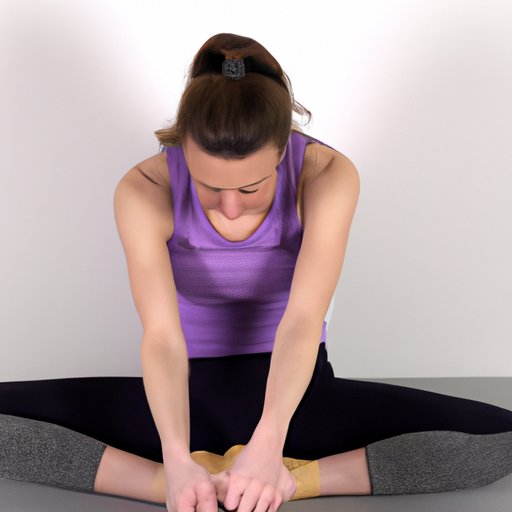
I. Introduction
If you’ve ever experienced a panic attack, you know how overwhelming it can be. Panic attacks are sudden and intense feelings of fear, anxiety, and physical sensations that can come on quickly and seemingly out of nowhere. They can be triggered by various situations and can occur in anyone, regardless of age or gender. In this article, we will explore different techniques and tips to deal with panic attacks and manage anxiety.
II. Definition of Panic Attacks and their Symptoms
Panic attacks are a type of anxiety disorder that can cause intense fear and discomfort. They usually last for a few minutes but can sometimes continue for longer. Panic attacks can cause physical symptoms such as a racing heartbeat, sweating, trembling, shortness of breath, and feelings of claustrophobia. Some other common symptoms include chest pain, nausea, dizziness, and feelings of impending doom.
It’s important to recognize the symptoms of a panic attack in yourself or others to seek help if needed. Knowing the symptoms can also help to prevent a full-blown panic attack from happening.
III. Breathing Techniques
Breathing exercises are a common technique used to manage the physical symptoms of a panic attack. Different breathing techniques can help regulate breathing, slow down the heart rate, and restore a sense of calm.
The following are some helpful breathing exercises:
Deep Breathing
This technique involves taking deep breaths in through the nose and out through the mouth. It can help to slow down breathing and reduce physical symptoms of anxiety.
Diaphragmatic Breathing
Also known as belly breathing, this technique involves breathing deeply from the abdomen rather than the chest. It helps to promote relaxation and reduce stress levels.
Box Breathing
This technique involves visualizing a box and taking deep breaths in for four seconds, holding the breath for four seconds, breathing out for four seconds, and holding the breath for four seconds again. This method can help regulate breathing and reduce the intensity of panic symptoms.
IV. Visualizations
Visualizations can be helpful for calming the mind and reducing the physical symptoms of anxiety. Some effective visualizations include:
Imagining a Peaceful Scene
Visualizing a peaceful scene, such as a beach or a forest, can help to calm down and distract the mind from anxious thoughts.
Focusing on a Certain Object
Concentrating on a certain object that is pleasant to look at can also help to redirect attention away from anxiety symptoms and promote relaxation.
Guided Imagery Exercise
A guided imagery exercise involves listening to a recording or a self-guided meditation that provides calming visualizations and relaxation techniques. These exercises can be found online or through a healthcare professional and can be an effective way to reduce anxiety levels.
V. Exercise
Exercise is a natural way to relieve stress and reduce anxiety levels. It is also an effective way to prevent future panic attacks. Some types of exercises that can be helpful for managing anxiety include:
Yoga
Yoga combines physical postures, controlled breathing, and meditation to promote relaxation and reduce stress levels. It can be beneficial for managing anxiety symptoms and preventing panic attacks.
Jogging
Jogging is an effective way to get the heart rate up and release endorphins. It can help reduce stress levels and improve overall well-being.
Dancing
Dancing is a fun way to get moving and release any tension in the body. It promotes physical activity and can help manage anxiety levels.
VI. Positive Self-Talk
Positive self-talk involves replacing negative thoughts with more positive ones. It is a way to challenge anxious thoughts and promote self-confidence. Some examples of positive self-talk phrases include:
- “I am in control of my thoughts and feelings.”
- “I am strong enough to handle this situation.”
- “I can get through this.”
VII. Medication and Therapy
While techniques like breathing exercises, visualizations, and self-talk can be helpful in managing anxiety and preventing panic attacks, sometimes medication or therapy may be necessary for more severe cases. Healthcare professionals such as therapists, psychiatrists, and general practitioners can provide these types of treatments.
Medication can include anti-anxiety medicine or mood stabilizers. Similarly, therapy can include cognitive-behavioral therapy or exposure therapy. This type of treatment is helpful for learning coping skills and addressing underlying causes of anxiety.
VIII. Regular Self-Care
Incorporating regular self-care practices is essential for managing anxiety levels and preventing panic attacks. Some ways to practice self-care include:
- Getting enough sleep
- Eating a balanced diet
- Communicating with friends and family
- Engaging in hobbies or activities that bring joy
IX. Conclusion
Panic attacks can be a challenging experience, but with the right techniques and practices, it is possible to manage and prevent them. Techniques such as breathing exercises, visualizations, exercise, positive self-talk, and self-care can be helpful in reducing anxiety and promoting relaxation. In more severe cases, medication or therapy can also be necessary options. It’s important to seek help and practice self-care regularly to manage panic attacks and anxiety.





